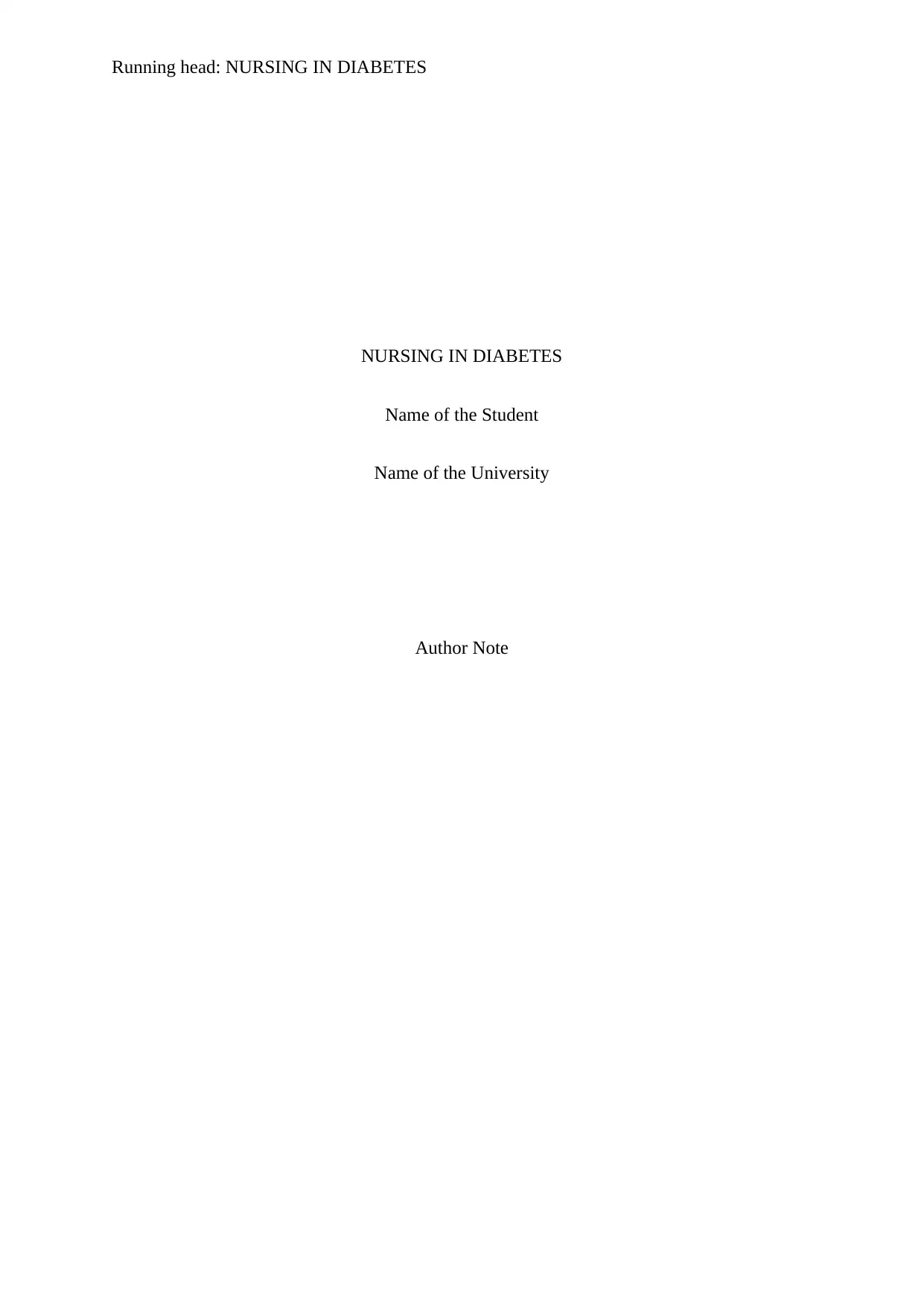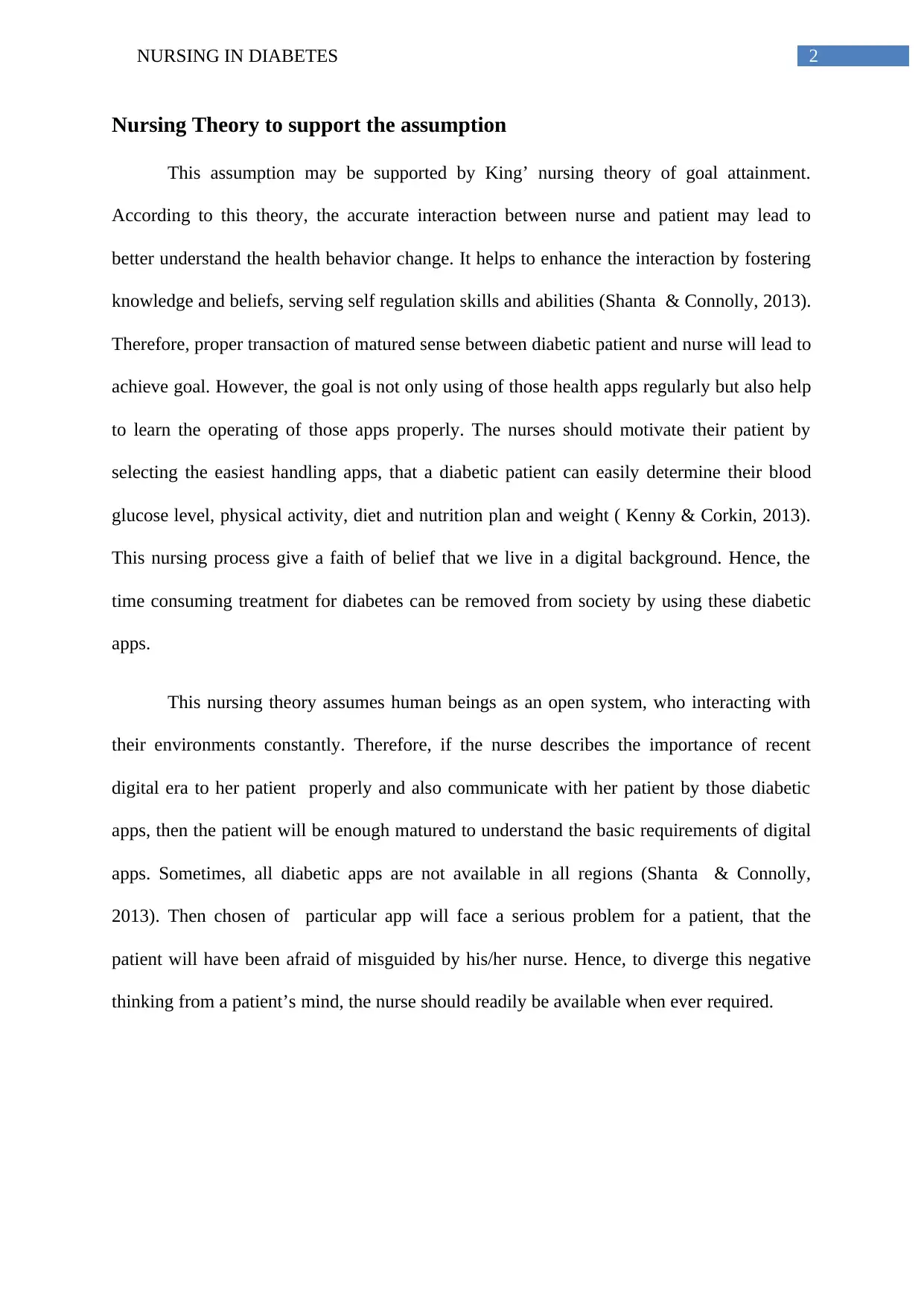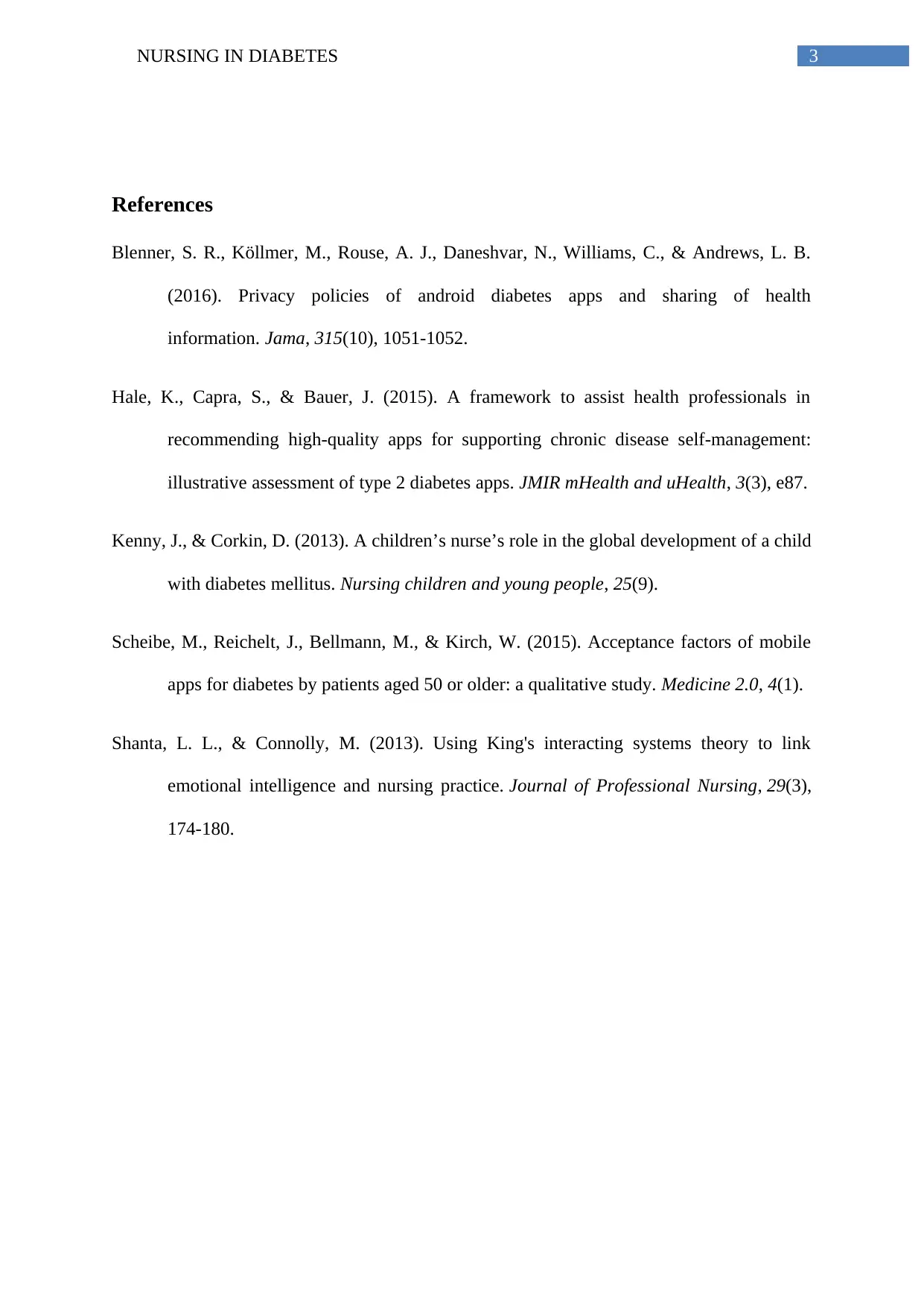Nursing Theory and Diabetes: An Analysis of App Compliance in Patients
VerifiedAdded on 2022/11/23
|4
|956
|324
Discussion Board Post
AI Summary
This discussion post analyzes the hypothesis that educational diabetic phone apps improve compliance with appointments, diet, and medication regimens in patients with type 2 diabetes. The student supports this assumption using King's nursing theory of goal attainment, which emphasizes the importance of nurse-patient interaction and the patient's understanding of health behavior changes. The post discusses the features of various diabetes apps, including those related to diet, exercise, medication reminders, and blood glucose tracking. The student argues that nurses can use these apps to motivate patients and facilitate their understanding of their health conditions. The post also addresses the potential challenges, such as app availability in all regions, and the nurse's role in addressing patient concerns. The student concludes by emphasizing the potential of diabetic apps to remove time-consuming treatments from society.
1 out of 4










![[object Object]](/_next/static/media/star-bottom.7253800d.svg)